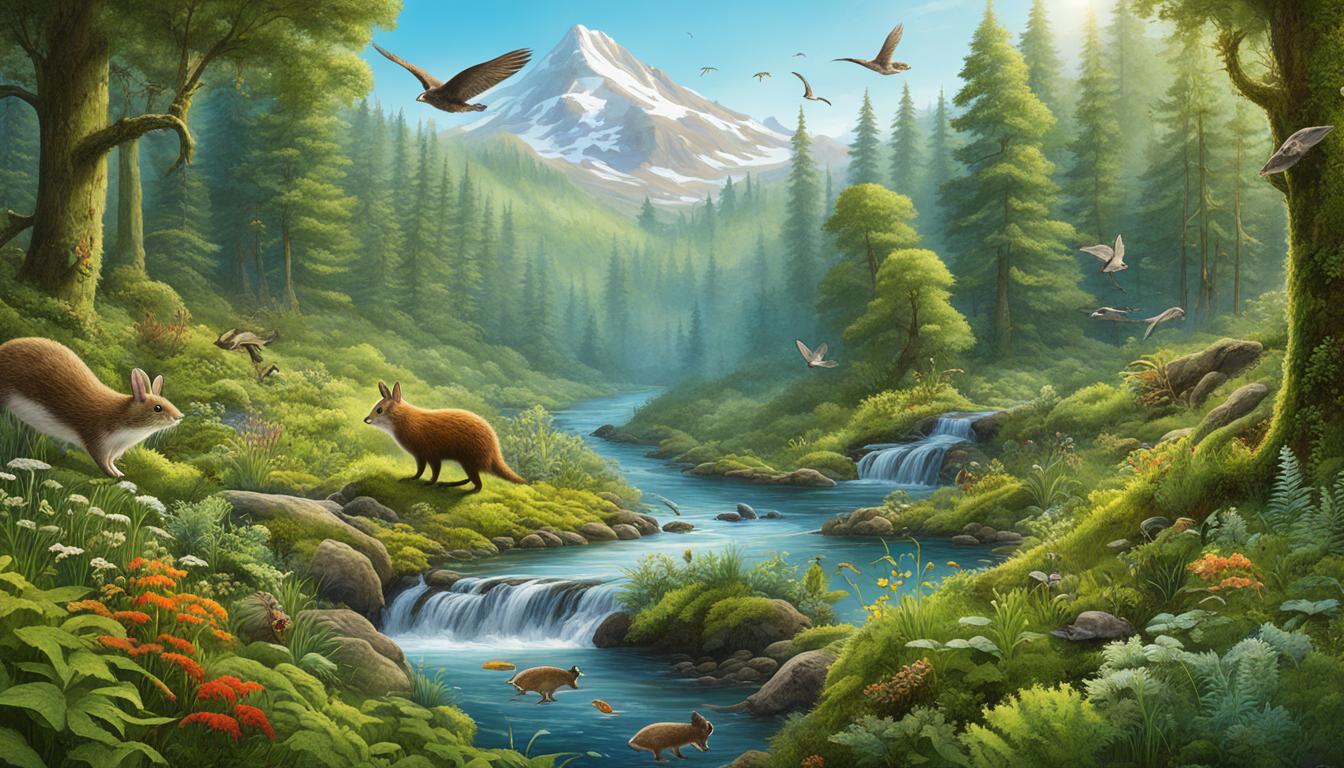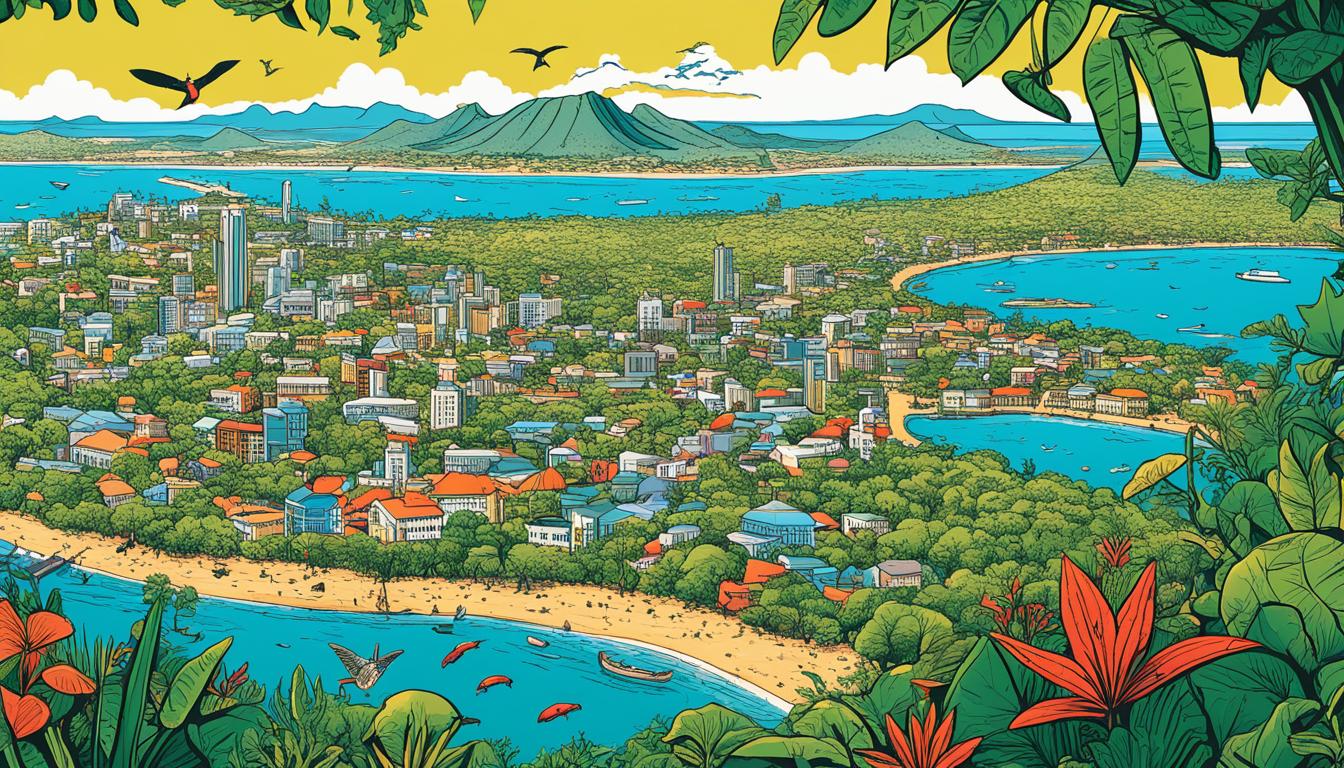United Arab Emirates Biodiversity: Animal and Plant Species and What Is Under Threat
Did you know that the United Arab Emirates (UAE) is home to over 800 species of plants, 48 species of mammals, 440 species of birds, 72 species of reptiles and amphibians, and more than 40 species of coral reefs? The UAE boasts a rich and diverse range of animal and plant species, thanks to its unique ecosystems, including desert, mountain, and coastal habitats. However, this biodiversity is facing significant threats and challenges that put its survival at risk.
Key Takeaways
- The United Arab Emirates is home to a diverse range of animal and plant species.
- The UAE has unique ecosystems, including desert, mountain, and coastal habitats.
- Threats such as habitat loss, climate change, and invasive species are putting UAE biodiversity at risk.
- Conservation efforts and sustainable practices are crucial for protecting UAE biodiversity.
- Preserving UAE biodiversity is important for the well-being of the country’s ecosystems, economy, and cultural heritage.
Importance of Biodiversity in the UAE
Biodiversity plays a vital role in the United Arab Emirates, supporting the well-being of the economy, society, and culture. The diverse ecosystems in the UAE provide essential services such as food supply, building materials, climate regulation, soil fertility renewal, disease control, and genetic resources. The country’s biodiversity also contributes to the preservation of cultural heritage, with species like the Arab Falcon and camels being of significant cultural importance. Protecting and conserving the UAE’s biodiversity is crucial for the sustainable development of the country and the well-being of its people.
With its unique ecological diversity, the UAE is home to a wide range of species that have adapted to various habitats, from the vast desert to the rugged mountains and the rich marine ecosystems. Each species and ecosystem has a specific role to play in maintaining the balance of nature and ensuring the overall health and resilience of the environment.
H3: The value of biodiversity
The importance of biodiversity in the UAE cannot be overstated. It provides a wide array of ecosystem services that are essential for human well-being and the functioning of the planet. These services include:
- Food supply: Many plant and animal species in the UAE contribute to the production of food, both for local consumption and export.
- Building materials: The diverse plant species in the UAE provide raw materials for construction, such as timber and fibres.
- Climate regulation: Ecosystems play a crucial role in regulating the local climate, helping to mitigate the impact of climate change.
- Soil fertility renewal: Plant species contribute to the natural process of nutrient cycling, enriching the soil and supporting agricultural productivity.
- Disease control: Biodiversity helps regulate disease vectors and provides natural medicines that contribute to human health and well-being.
- Genetic resources: The UAE’s biodiversity holds valuable genetic resources that have the potential for future scientific and medical discoveries.
Beyond these practical benefits, the UAE’s biodiversity is also of great cultural importance. The country’s flora and fauna are deeply intertwined with its cultural heritage, representing symbols of significance and traditional practices.
H3: Cultural significance of biodiversity in the UAE
The UAE has a strong connection with its natural surroundings, and its biodiversity plays a central role in its cultural identity. The Arab Falcon, for example, is an iconic species in the UAE, symbolizing strength and nobility. Falcons are highly regarded as valuable companions in traditional hunting practices and are central to the popular sport of falconry.
Camels are another culturally significant species in the UAE, representing resilience, adaptation, and companionship. These majestic animals have been a vital resource for transportation, food, and milk for centuries, and their presence in the UAE’s cultural traditions is still deeply felt.
By conserving the UAE’s biodiversity, we protect and preserve not only natural resources but also cultural heritage and traditional practices that have been passed down through generations.
H3: Conservation efforts in the UAE
The United Arab Emirates recognizes the importance of preserving its diverse biodiversity and has prioritized conservation efforts to safeguard its ecosystems and species. The government has established protected areas, wildlife sanctuaries, and national parks to maintain critical habitats and provide refuge for endangered species.
The UAE is committed to several international environmental agreements, such as the Convention on Biological Diversity and the Ramsar Convention, reinforcing its dedication to conservation on a global scale.
Conservation programs in the UAE focus on habitat restoration, captive breeding, public awareness and education, and scientific research. Through these initiatives, the UAE aims to increase the resilience of its ecosystems, protect endangered species, and promote sustainable practices that ensure a harmonious coexistence between humans and nature.
H3: Image – UAE Ecological Diversity
The image above showcases the remarkable ecological diversity found in the United Arab Emirates. From the vast desert expanse to the lush mangroves and vibrant coral reefs, the UAE’s ecosystems are home to a multitude of plant and animal species. This rich biodiversity highlights the importance of conservation efforts in maintaining the unique natural heritage of the UAE.
United Arab Emirates Terrestrial Biodiversity
The United Arab Emirates (UAE) is renowned for its diverse range of terrestrial ecosystems, including the distinctive desert and awe-inspiring mountain habitats. These environments support a rich variety of flora and fauna, making the UAE a hotspot for wildlife diversity and scenic beauty.
In the desert, numerous unique plant species have evolved to adapt to the challenging climate, providing vital sources of grazing and fodder for the local animal population. These resilient plants, such as the Arabian camelthorn and desert hyacinth, showcase the incredible ability of life to thrive even in arid conditions.
Meanwhile, the UAE’s majestic mountains harbor a diverse array of wildlife, including mammals, reptiles, and birds. Creatures like the Arabian tahr, Arabian sand gazelle, and striped hyena call these mountainous habitats their home. These resilient species have adapted to the rugged terrain, creating a delicate balance between predator and prey.
“The UAE is a treasure trove of endemic species that have evolved over centuries in these unique terrestrial ecosystems,” says Dr. Fatima Al Dhaheri, a renowned wildlife biologist. “We must protect these habitats to safeguard the extraordinary biodiversity they support.”
Unfortunately, several species in the UAE are currently facing the threat of extinction. Iconic species like the Arabian oryx and Arabian leopard are under immense pressure due to habitat loss, hunting, and other factors. Protecting and conserving these endangered species has become a top priority for the UAE’s conservation programs.
“The Arabian oryx and Arabian leopard are flagships for the UAE’s conservation efforts,” emphasizes Dr. Khalid Al Suwaidi, a leading environmental scientist. “By preserving these species, we not only protect their unique genetic heritage but also contribute to the overall ecological balance of our precious environment.”
To combat these threats, the UAE has established a network of protected areas and implemented conservation programs dedicated to the preservation of these endangered species. These initiatives aim to create safe havens where animals can thrive, ensuring their long-term survival within their natural habitats.
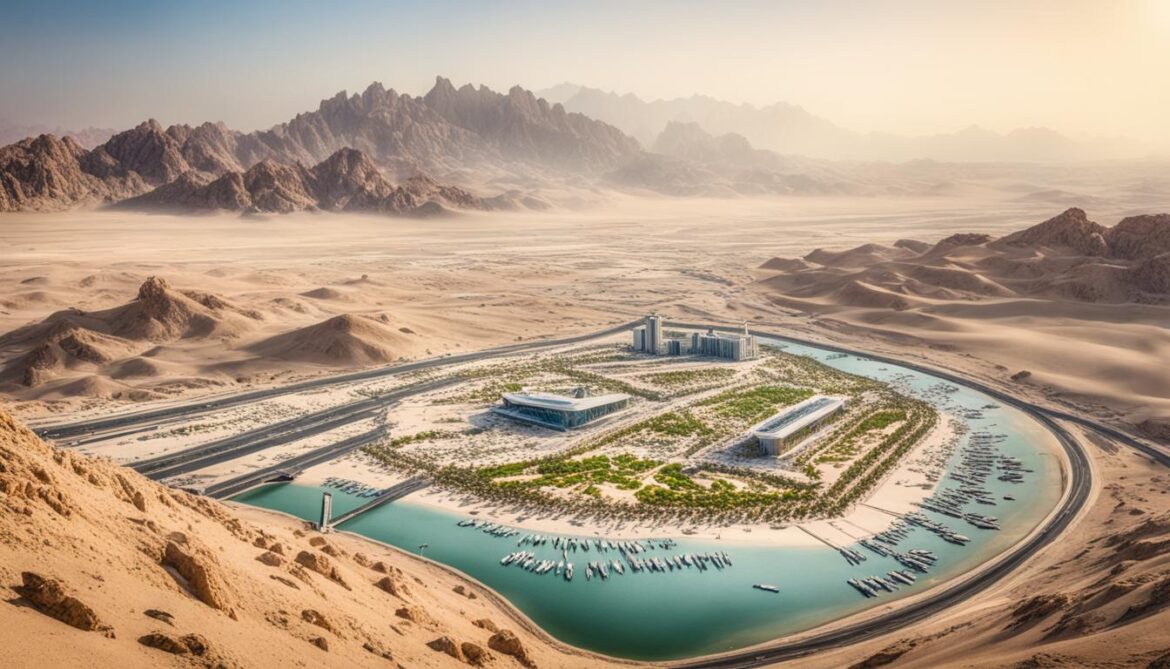
| Endangered Species | Threats | Conservation Measures |
|---|---|---|
| Arabian Oryx | Habitat loss, hunting | Establishment of protected areas, captive breeding programs |
| Arabian Leopard | Habitat loss, hunting, fragmentation | Conservation breeding programs, habitat restoration |
| Arabian Gazelle | Habitat loss, overgrazing, poaching | Protected area management, anti-poaching initiatives |
“Saving these endangered species requires a collective effort,” says Dr. Salama Al Dhaheri, an expert in conservation biology. “Conservation organizations, government bodies, and the public must work hand in hand to protect and restore their habitats, ensuring a sustainable future for the UAE’s terrestrial biodiversity.”
United Arab Emirates Marine Biodiversity
The United Arab Emirates is home to a unique and thriving marine ecosystem, encompassing over 2,390 km of coastline along the Arabian Gulf and the Sea of Oman. These coastal areas are characterized by a variety of marine habitats, including coral reefs, seagrass beds, mangroves, and offshore islands, which contribute to the remarkable marine biodiversity found in the UAE.
Within these diverse habitats, a wide array of marine species thrives, including fish, turtles, dolphins, and various types of coral. Coral reefs, in particular, play a critical role in supporting a high level of biodiversity. They serve as nurseries, shelter, and feeding grounds for numerous marine organisms, creating intricate ecosystems that are essential to the overall health and balance of the marine environment.
However, the marine biodiversity of the UAE faces significant threats. Climate change, pollution, overfishing, and habitat destruction pose imminent dangers to these delicate ecosystems. Rising water temperatures and ocean acidification, caused by climate change, negatively impact the growth and survival of coral reefs. Pollution, including oil spills and coastal development, can lead to the destruction of habitats and the disruption of marine species’ life cycles.
Overfishing, driven by unsustainable practices, depletes fish populations and disturbs the delicate balance of marine food chains. Meanwhile, habitat destruction, such as the loss of mangrove forests and the degradation of seagrass beds, diminishes the availability of essential habitats and food sources for marine species.
To protect and sustain the marine biodiversity of the UAE, conservation efforts are paramount. Implementing measures to combat climate change and reduce pollution can help preserve the health of marine ecosystems. Regulating fishing practices, establishing marine protected areas, and promoting sustainable fishing techniques are essential in maintaining fish populations and safeguarding the marine food web.
Efforts to restore and preserve critical habitats, such as mangrove forests and seagrass beds, are crucial in providing the necessary resources for marine species to thrive. Additionally, raising awareness and educating the public about the importance of marine biodiversity and the need for conservation is vital in gaining support and fostering stewardship.
The conservation of marine biodiversity in the UAE is not only essential for the preservation of unique and irreplaceable ecosystems but also for the continued prosperity and resilience of coastal communities, as these ecosystems provide valuable services such as coastal protection and climate regulation.
By prioritizing the protection and restoration of marine habitats, implementing sustainable practices, and fostering collaboration between government agencies, conservation organizations, and local communities, the UAE can effectively safeguard its marine biodiversity for future generations to enjoy.
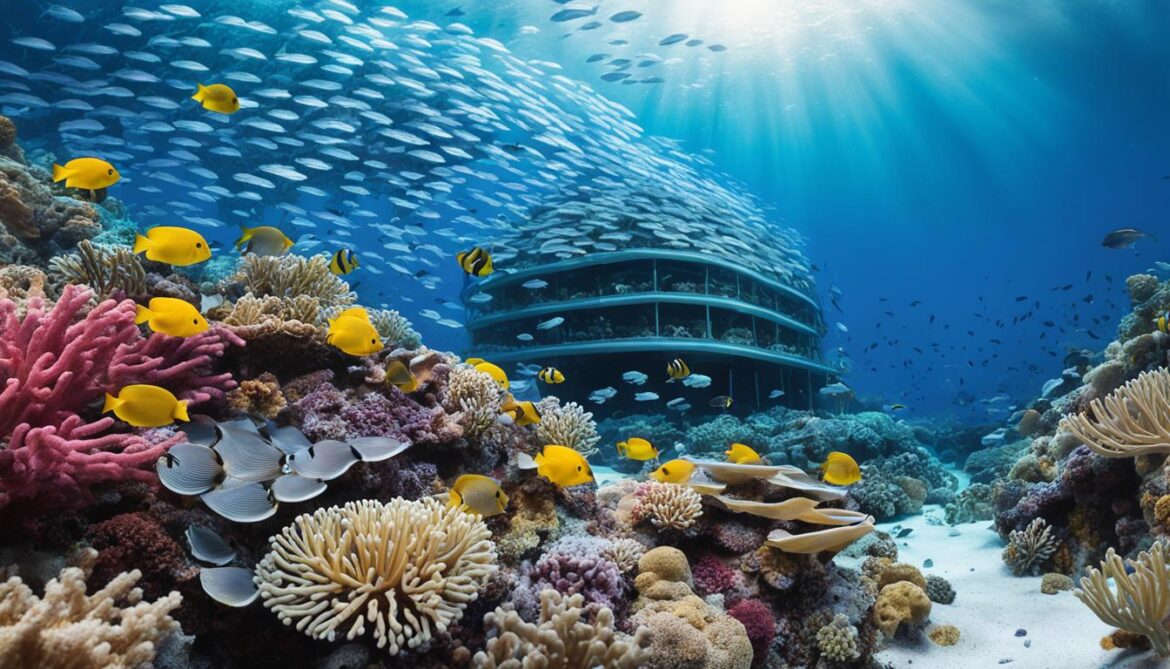
Threats to UAE Biodiversity
The biodiversity of the United Arab Emirates (UAE) is facing numerous threats that endanger the survival of various species and ecosystems. These threats need urgent attention to preserve the unique flora and fauna of the UAE. Some of the major threats to UAE biodiversity include:
- Habitat Loss and Fragmentation: Urbanization, infrastructure development, and agricultural expansion lead to the loss and fragmentation of natural habitats. This destroys the homes of many species and disrupts their natural ecosystems.
- Climate Change: Rising temperatures and sea levels due to climate change have a detrimental impact on vulnerable species and their habitats. It alters ecosystems and reduces the ability of species to adapt to changing conditions.
- Overgrazing: Livestock overgrazing contributes to habitat degradation and reduces the availability of food and resources for native species. It disrupts the balance of the ecosystem and affects the survival of many plant and animal species.
- Hunting: Illegal hunting poses a significant threat to endangered species in the UAE. The Arabian oryx, Arabian leopard, and various bird species are particularly vulnerable to poaching, leading to a decline in their populations.
- Invasive Species: The introduction of non-native invasive species disrupts the natural balance of ecosystems. These species outcompete native species for resources and can cause significant harm to local biodiversity.
It is essential to develop integrated conservation strategies and adopt sustainable practices to mitigate these threats and protect UAE biodiversity. Only through concerted efforts and effective management can we ensure the long-term survival of endangered species and maintain the ecological balance of the UAE.
“The true measure of any society can be found in how it treats its most vulnerable members.”
– Mahatma Gandhi
Implementing conservation programs, creating protected areas, and promoting public awareness are essential steps towards safeguarding UAE biodiversity for future generations. Together, we can make a positive difference and secure a sustainable future for the UAE’s unique flora and fauna.
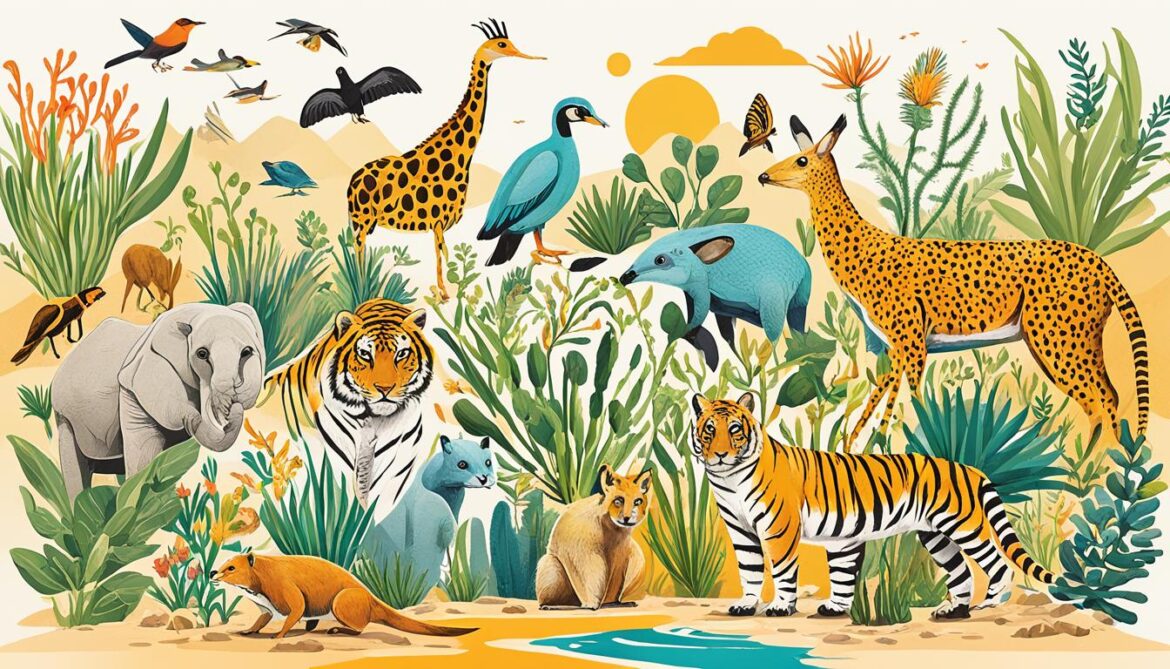
| Species | Conservation Status | Main Threats |
|---|---|---|
| Arabian Oryx (Oryx leucoryx) | Critically Endangered | Habitat loss, poaching |
| Arabian Leopard (Panthera pardus nimr) | Critically Endangered | Habitat loss, hunting |
| Houbara Bustard (Chlamydotis undulata) | Endangered | Habitat loss, hunting |
| Socotra Cormorant (Phalacrocorax nigrogularis) | Critically Endangered | Habitat loss, pollution |
| Spiny-tailed Lizard (Uromastyx aegyptia) | Vulnerable | Habitat loss, overgrazing |
Conservation Efforts in the UAE
The United Arab Emirates (UAE) has placed significant emphasis on the conservation of its rich biodiversity and the protection of endangered species. The government has taken proactive measures by establishing various protected areas, including national parks, wildlife reserves, and marine protected areas. These initiatives aim to preserve critical habitats and provide sanctuaries for endangered species in the UAE.
Conservation programs have been implemented specifically for species at risk, such as the Arabian oryx and Houbara bustard. These programs focus on critical strategies such as captive breeding, habitat restoration, and public awareness campaigns to promote the importance of wildlife conservation.
The UAE recognizes the value of international collaboration in biodiversity conservation. As such, the country actively participates in global initiatives such as the Convention on Biological Diversity and the Ramsar Convention. These partnerships allow for knowledge sharing, best practices, and collective efforts towards preserving global biodiversity.
To ensure the success of these conservation initiatives, continued efforts are essential. Ongoing research, monitoring, and public engagement play a crucial role in understanding the current state of UAE wildlife conservation and shaping future conservation strategies. By involving local communities and raising awareness about the significance of biodiversity, the UAE aims to secure a sustainable and thriving natural environment.

Conservation Achievements in the UAE
| Protected Area | Location | Description |
|---|---|---|
| Al Maha Wildlife Reserve | Dubai | A reserve dedicated to the conservation of endangered species, including the Arabian oryx and sand gazelle. |
| Sir Bani Yas Island | Abu Dhabi | An island transformed into a wildlife reserve, home to rare species such as the Arabian oryx, sand gazelle, and dolphins. |
| Marawah Marine Biosphere Reserve | Abu Dhabi | A protected area encompassing diverse marine habitats and vital for the conservation of sea turtles, dugongs, and coral reefs. |
| Hatta Mountain Conservation Reserve | Dubai | A mountainous region serving as a refuge for endangered species, including the Arabian leopard. |
“Conserving the UAE’s rich biodiversity is not just a responsibility; it is a commitment to our future generations. Through collective efforts and strategic conservation initiatives, we can ensure the survival of our unique wildlife and preserve the ecological balance in our beloved nation.” – Minister of Climate Change and Environment
Sustainable Practices in the UAE
The United Arab Emirates acknowledges the significance of adopting sustainable practices to safeguard biodiversity and maintain ecological diversity. The government has implemented various measures to promote sustainable development, including the use of renewable energy, water conservation, waste management, and sustainable agriculture practices. These initiatives aim to reduce the ecological footprint and preserve natural resources for future generations.
Sustainable fishing practices and regulations have been introduced to protect marine resources and prevent overfishing. By implementing responsible fishing techniques and establishing catch limits, the UAE strives to maintain the balance of its marine ecosystems and conserve vulnerable species.
Education and awareness programs play a vital role in engaging the public and promoting sustainable lifestyles. These initiatives aim to raise awareness about the importance of biodiversity conservation, ecological diversity, and wildlife protection in the UAE. By educating individuals on the value of sustainable practices, it empowers them to make responsible choices that contribute to the preservation of the country’s natural heritage.
Adopting sustainable practices is crucial for maintaining the ecological balance and ensuring the long-term well-being of both human and natural communities in the UAE. By embracing sustainability, the UAE can continue to protect its rich biodiversity and contribute to global efforts for a greener and more sustainable future.

United Arab Emirates National Red List
In order to assess and monitor the conservation status of species in the United Arab Emirates (UAE), the country has developed a comprehensive National Red List. This Red List provides valuable information on threatened species within the UAE, including those that are endangered, critically endangered, and data deficient. The assessment covers a wide range of species, encompassing mammals, birds, reptiles, amphibians, plants, corals, and fish. By prioritizing conservation measures and providing essential data for decision-making and conservation planning, the Red List serves as a crucial tool in identifying species at risk and directing efforts toward their protection and recovery.
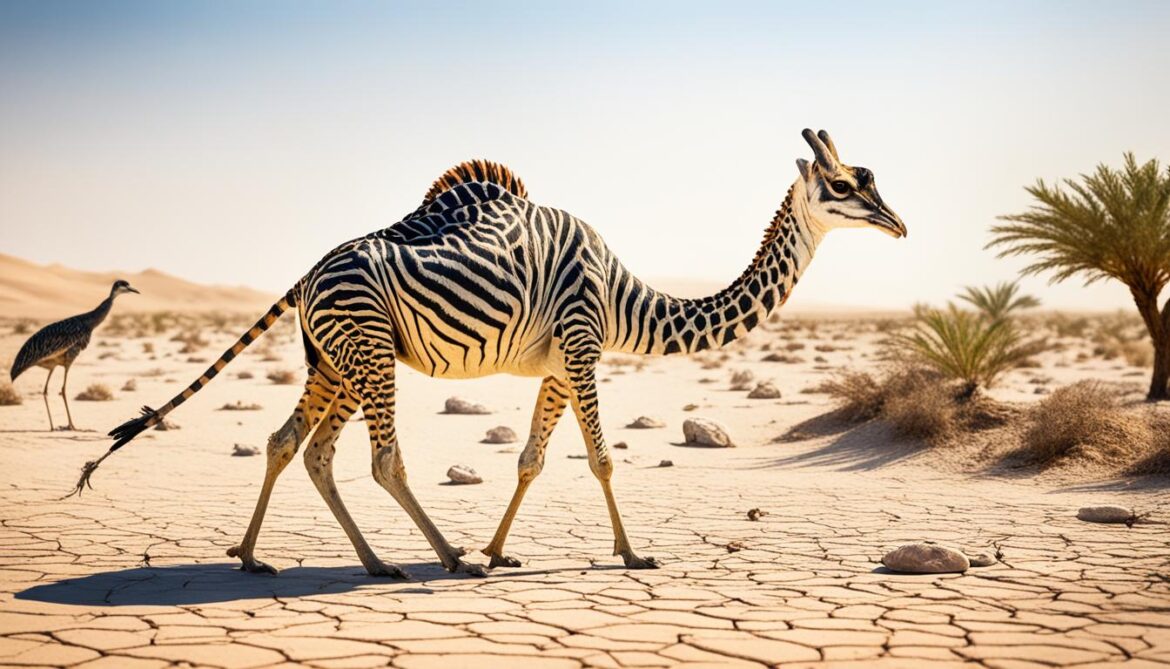
The UAE Red List acts as a comprehensive resource, highlighting the urgent need to address the conservation status of species in the country. It aids in identifying the most vulnerable species and allows for focused conservation efforts to be put into place. By utilizing the Red List, scientists, conservationists, and policymakers can make informed decisions and implement strategies to mitigate the threats faced by endangered species in the UAE. The Red List also raises awareness among the public and encourages collective action to safeguard the biodiversity of the UAE.
The Red List plays a vital role in supporting the UAE’s commitment to sustainable development and wildlife conservation. By continuously monitoring and updating the Red List, the UAE aims to protect and preserve its unique biodiversity, ensuring the survival of threatened species for future generations to appreciate and enjoy.
UAE Protected Areas
The United Arab Emirates (UAE) has taken significant steps to safeguard its biodiversity and preserve key ecosystems by establishing a network of protected areas. These protected areas, including national parks, wildlife reserves, nature reserves, and marine protected areas, serve as vital sanctuaries for endangered species, critical habitats, and biodiversity hotspots.
One notable protected area in the UAE is the Arabian Oryx Sanctuary, which was established specifically for the conservation of the Arabian Oryx, a majestic desert antelope. This sanctuary provides a safe haven for the oryx to thrive and helps maintain the ecological balance in the arid desert environment.
Another prominent protected area is the Wadi Wurayah National Park, located in the mountains of Fujairah. This park is home to a variety of plant and animal species, including the critically endangered Arabian Leopard. Efforts are being made to protect this vulnerable species and preserve its natural habitat.
Sir Bani Yas Island, located off the coast of Abu Dhabi, is also a significant protected area in the UAE. It is renowned for its diverse range of wildlife, including gazelles, cheetahs, and dolphins. The island serves as a hub for research, education, and sustainable tourism, offering visitors a unique opportunity to immerse themselves in the region’s natural beauty.
These protected areas are essential for the conservation of the UAE’s unique flora and fauna and provide valuable opportunities for research, education, and ecotourism. By safeguarding these biodiversity hotspots, the UAE is taking crucial steps towards securing a sustainable future for its natural heritage.
UAE Biodiversity Monitoring and Research
The United Arab Emirates recognizes the importance of biodiversity monitoring and research in informing conservation efforts. Through collaboration among various research institutions, government agencies, and international organizations, comprehensive studies on UAE biodiversity are conducted. These studies focus on assessing the distribution of species, understanding population dynamics, evaluating habitats, and analyzing the impacts of climate change and human activities on biodiversity. To track the changes in species abundance, diversity, and ecosystem health, rigorous biodiversity monitoring programs have been implemented. The data obtained from research and monitoring are essential in understanding the status and trends of UAE biodiversity, providing valuable insights to guide conservation actions.
Research and monitoring initiatives in the UAE play a crucial role in collecting scientific evidence, fostering greater understanding, and identifying priority areas for conservation. By studying and documenting the flora and fauna of the UAE, researchers contribute to the global knowledge base on biodiversity and help conserve the unique ecological heritage of the region.
“Research is essential in expanding our understanding of UAE biodiversity and driving conservation efforts. By investigating the factors affecting species and their habitats, we can develop targeted conservation strategies that effectively address the challenges faced by our natural ecosystems.” – Dr. Sara Al Dhaheri, Director-General of the Environment Agency – Abu Dhabi.
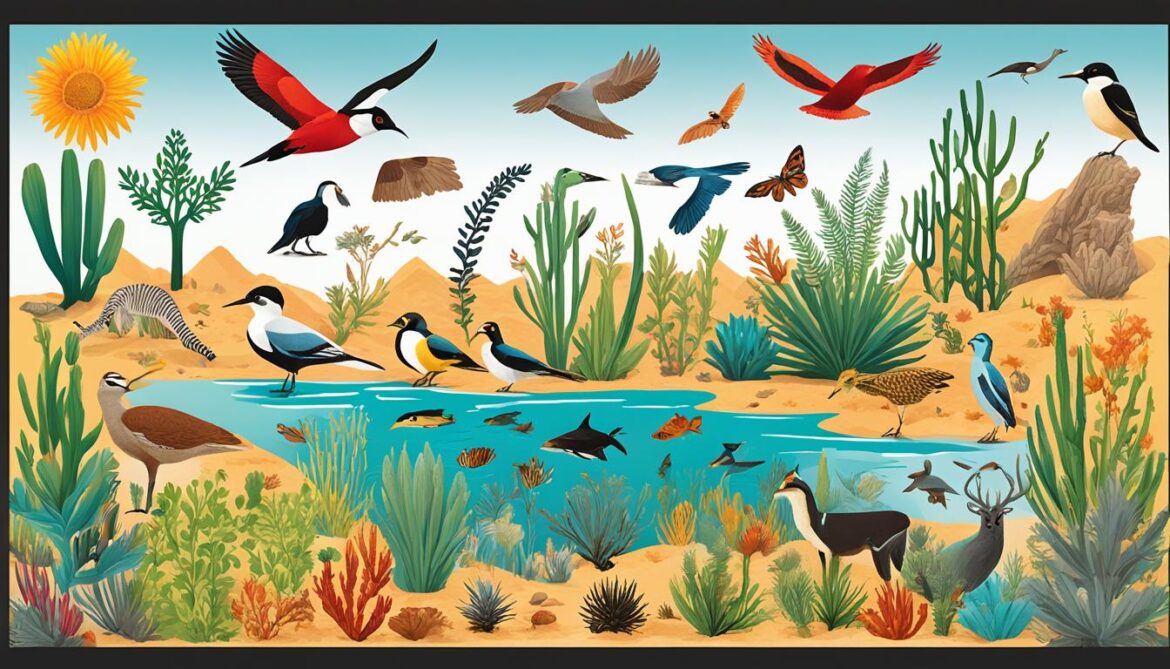
Research Focus Areas:
- Species distribution and abundance
- Population dynamics and trends
- Habitat assessments and mapping
- Evaluation of ecosystem services
- Impacts of climate change and human activities
- Conservation genetics and genomics
The research findings contribute to the development of effective conservation strategies, species management plans, and the identification of key areas for habitat restoration and protection. Moreover, research also informs policy-making processes and helps raise awareness among decision-makers, stakeholders, and the general public about the significance of biodiversity conservation.
Key Research Institutions:
| Institution | Mandate |
|---|---|
| Environment Agency – Abu Dhabi | Leading environmental agency responsible for biodiversity conservation in Abu Dhabi |
| UAE University | Academic institution conducting research on various aspects of UAE biodiversity |
| Emirates Wildlife Society – WWF | Non-governmental organization working on wildlife conservation and research in the UAE |
| UAE Ministry of Climate Change and Environment | Government ministry overseeing environmental research and conservation efforts |
In collaboration with local and international partners, these institutions undertake comprehensive studies, foster knowledge exchange, and promote scientific cooperation to advance biodiversity research in the UAE.
Challenges and Future Outlook for UAE Biodiversity
Despite ongoing conservation efforts, the protection of biodiversity in the United Arab Emirates (UAE) presents several challenges. Rapid urbanization, habitat loss, climate change, and invasive species continue to pose significant threats that require immediate attention.
Habitat loss due to urbanization and infrastructure development is a key challenge facing UAE biodiversity. As cities expand and human activities encroach upon natural habitats, the delicate balance of ecosystems is disrupted, leading to the displacement and endangerment of many species.
Climate change is another pressing concern. Rising temperatures and changing rainfall patterns directly impact the survival and behavior of plants and animals, affecting their ability to adapt to new conditions and putting them at higher risk of extinction.
The spread of invasive species is yet another challenge that poses a threat to UAE biodiversity. These non-native species compete with native flora and fauna for resources, disrupt natural ecosystems, and can cause significant damage to the delicate balance of local biodiversity.
As conservation efforts progress, it is crucial to actively involve the public in biodiversity conservation and raise awareness about its significance. By fostering a sense of responsibility and promoting sustainable practices among individuals and communities, we can collectively contribute to the preservation of UAE biodiversity for future generations.
To ensure the future of UAE biodiversity, conservation efforts must prioritize strategic planning, policy implementation, capacity building, and community involvement. Collaboration and coordination between government agencies, research institutions, conservation organizations, and local communities are essential for effective conservation and the protection of the UAE’s unique flora and fauna.
Conservation Priorities in the UAE
The following table highlights the key conservation priorities in the UAE:
| Conservation Priority | Threats |
|---|---|
| Protection of key habitats | Urbanization, habitat loss, infrastructure development |
| Endangered species conservation | Habitat loss, climate change, hunting, invasive species |
| Sustainable land and resource management | Overgrazing, soil degradation, water scarcity |
| Climate change mitigation and adaptation | Rising temperatures, changing rainfall patterns |
By addressing these conservation priorities, the UAE can ensure the long-term sustainability and protection of its biodiversity. Through continued efforts and collaboration, the future of UAE biodiversity conservation looks promising.
Conclusion
The United Arab Emirates (UAE) boasts a remarkable biodiversity, with a plethora of plant and animal species thriving in its distinctive desert, mountainous, and marine landscapes. Preserving this biodiversity is of utmost importance, as it ensures the well-being of the country’s ecosystems, economy, and cultural heritage. The UAE’s commitment to conservation efforts, including the establishment of protected areas, implementation of conservation programs, and adoption of sustainable practices, plays a vital role in safeguarding endangered species and maintaining ecological balance.
However, the journey towards UAE biodiversity conservation does not end here. Continued research, monitoring, and active engagement from the public are key to overcoming the challenges that threaten biodiversity. By addressing issues such as habitat loss, climate change, and invasive species, the UAE can secure a sustainable future for its wildlife diversity. Through collective efforts, the nation can preserve its rich natural heritage and ensure the well-being of future generations.
It is crucial to recognize the importance of UAE biodiversity. The country’s unique ecosystems provide various essential services, including food supply, climate regulation, and soil fertility renewal. Additionally, the UAE’s diverse flora and fauna hold cultural significance, representing the nation’s heritage and identity. By prioritizing biodiversity conservation, the UAE takes significant strides towards sustainable development, ultimately creating a harmonious balance between human activities and the natural world.
FAQ
What is biodiversity?
Biodiversity refers to the variety and variability of life on Earth. It encompasses the different species of plants, animals, and microorganisms, as well as their habitats and the ecological processes that support them.
Why is biodiversity important in the United Arab Emirates?
Biodiversity is important in the UAE as it supports the economy, society, and culture. It provides essential services like food supply, climate regulation, and soil fertility renewal. Additionally, species like the Arab Falcon and camels have cultural significance in the UAE.
What are the different terrestrial ecosystems in the UAE?
The UAE has various terrestrial ecosystems, including desert and mountain habitats. These unique environments support a diverse range of plant and animal species.
What is the status of marine biodiversity in the UAE?
The UAE has a diverse marine ecosystem, including coral reefs, seagrass beds, mangroves, and offshore islands. These habitats support a wide range of marine species, such as fish, turtles, dolphins, and coral.
What are the threats to UAE biodiversity?
Threats to UAE biodiversity include habitat loss, climate change, overgrazing, hunting, and invasive species. These factors contribute to the decline of endangered species and the degradation of ecosystems.
What conservation efforts are being made in the UAE?
The UAE has established protected areas, conservation programs, and collaborations with international conventions to protect and conserve its biodiversity. Efforts focus on species like the Arabian oryx and Houbara bustard through captive breeding, habitat restoration, and public awareness.
How is the UAE promoting sustainable practices for biodiversity conservation?
The UAE promotes sustainable development through measures like renewable energy use, water conservation, waste management, sustainable agriculture practices, and sustainable fishing regulations.
What is the UAE National Red List?
The UAE National Red List assesses and monitors the conservation status of species in the country. It provides valuable information on threatened species, aiding in conservation planning and decision-making.
What are the protected areas in the UAE?
The UAE has established protected areas, including national parks, wildlife reserves, nature reserves, and marine protected areas. Examples include the Arabian Oryx Sanctuary, Wadi Wurayah National Park, and Sir Bani Yas Island.
What research and monitoring activities are conducted for UAE biodiversity?
Research institutions, government agencies, and international organizations collaborate on biodiversity studies in the UAE. These studies focus on species distribution, population dynamics, habitat assessments, and the impacts of climate change and human activities.
What are the challenges and future outlook for UAE biodiversity?
Challenges to UAE biodiversity include rapid urbanization, habitat loss, climate change, and invasive species. Strengthening public awareness and engagement, strategic planning, policy implementation, and community involvement are important for the future of UAE biodiversity conservation.
Why is conserving UAE biodiversity important?
Conserving UAE biodiversity is crucial for preserving the country’s unique flora and fauna, sustaining ecosystem services, supporting the economy, and maintaining cultural heritage. It ensures a sustainable future for both human and natural communities in the UAE.




